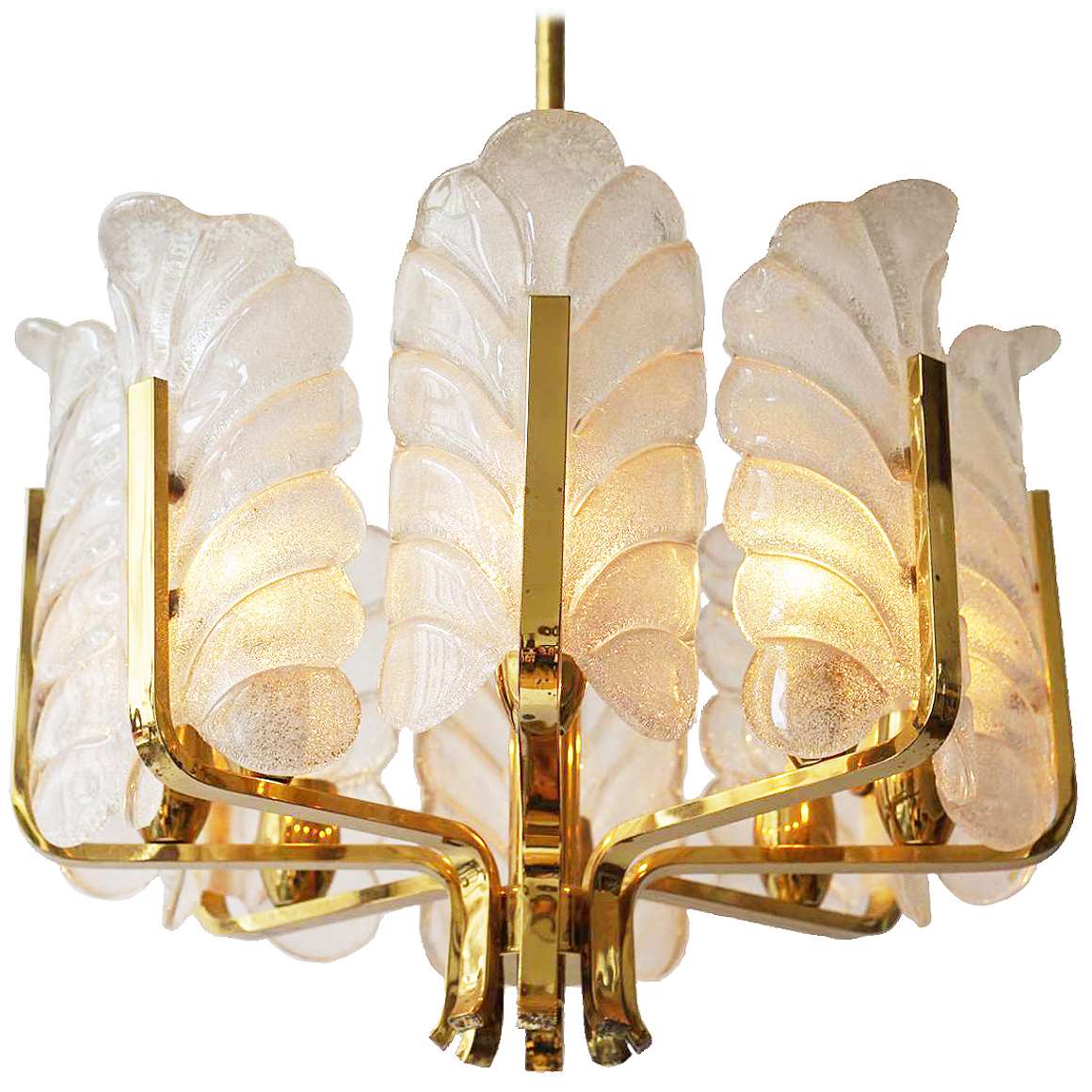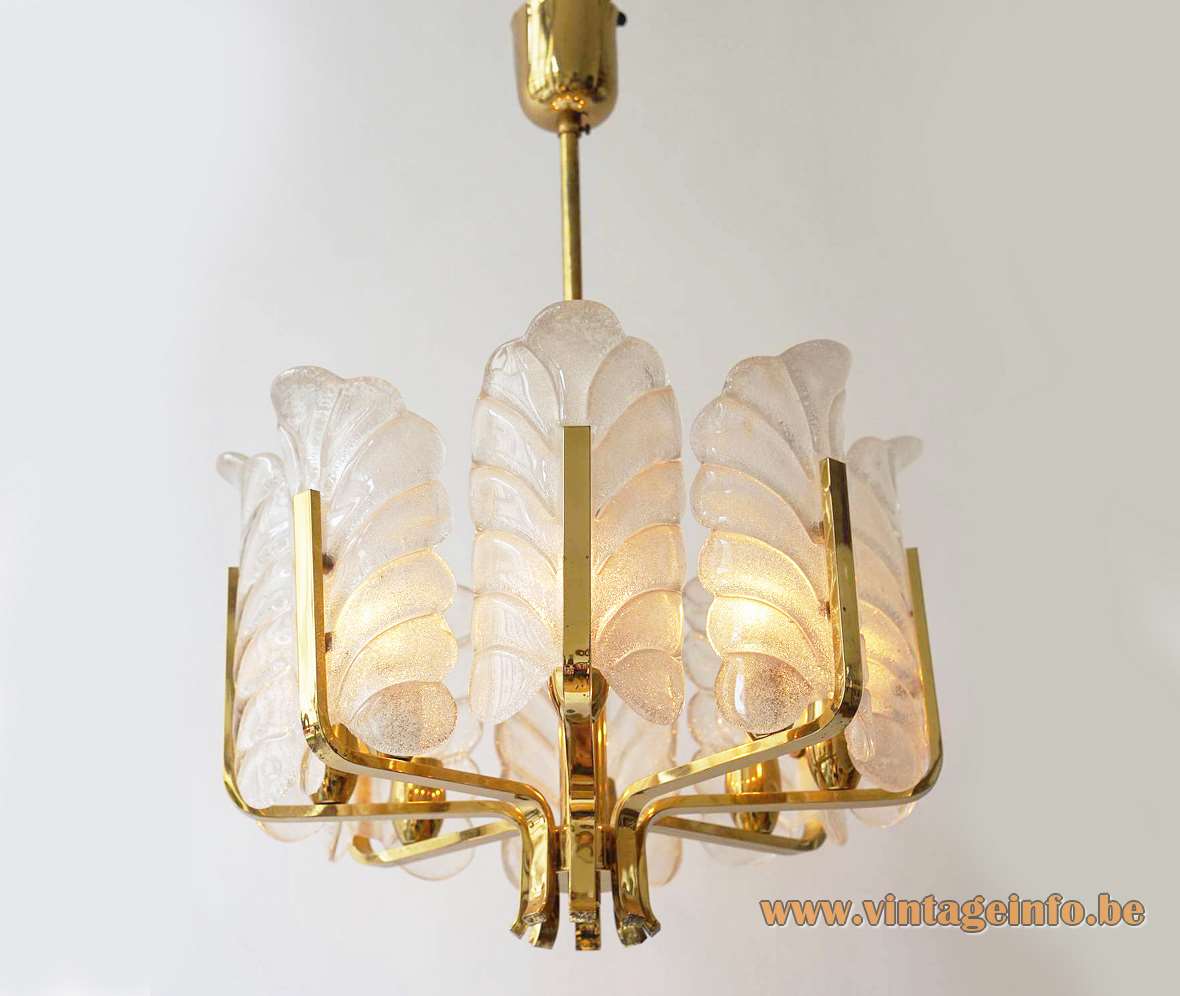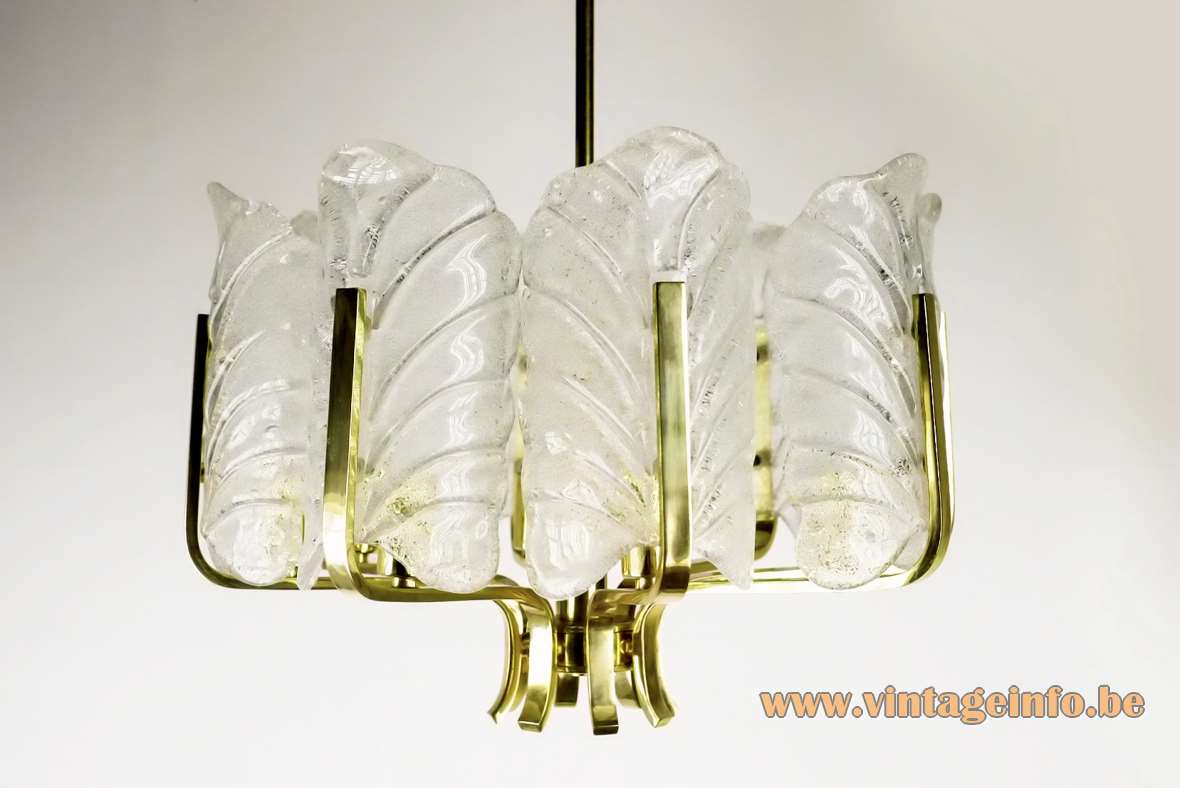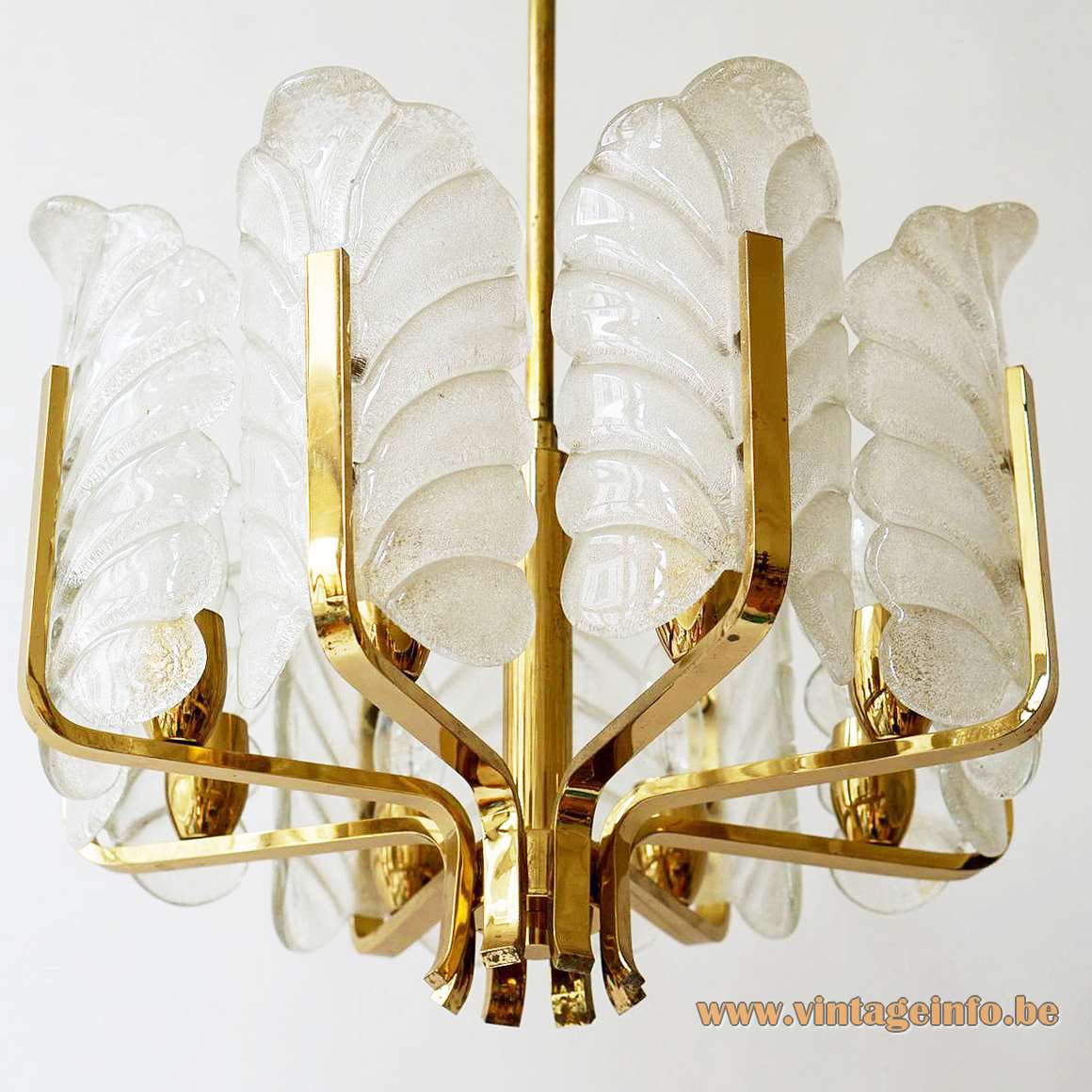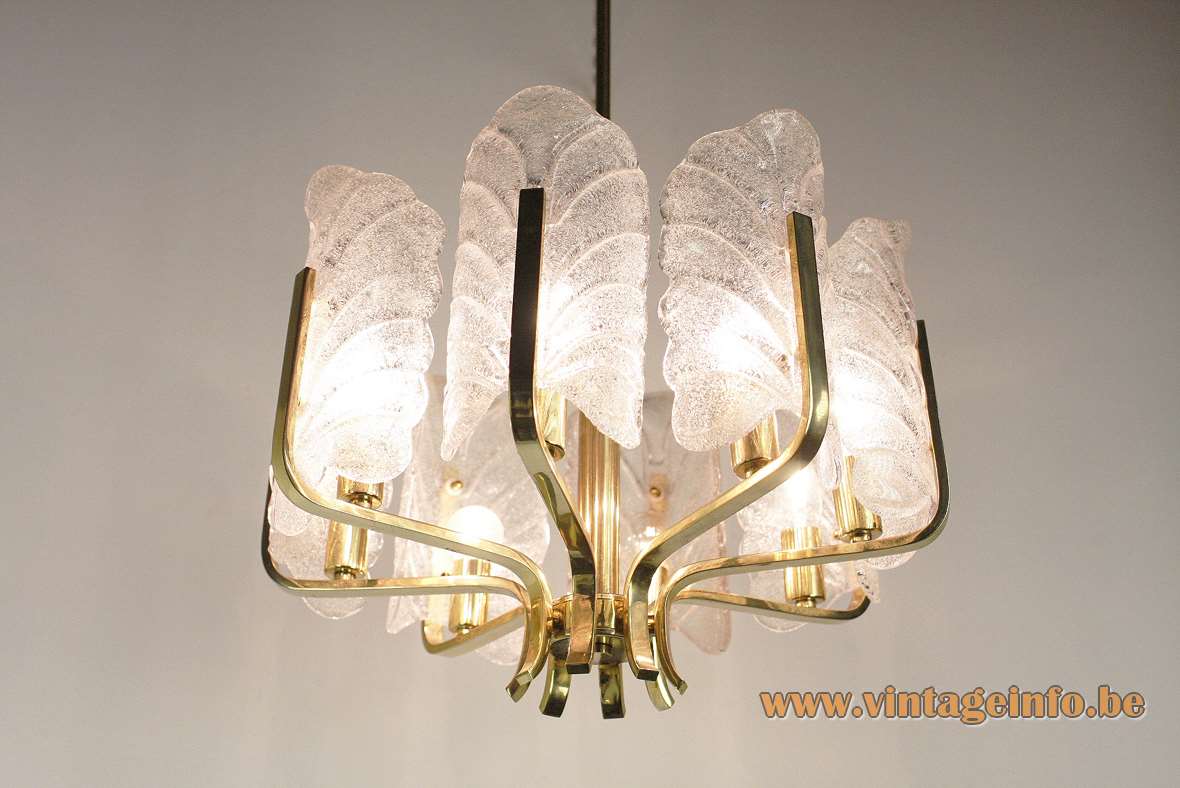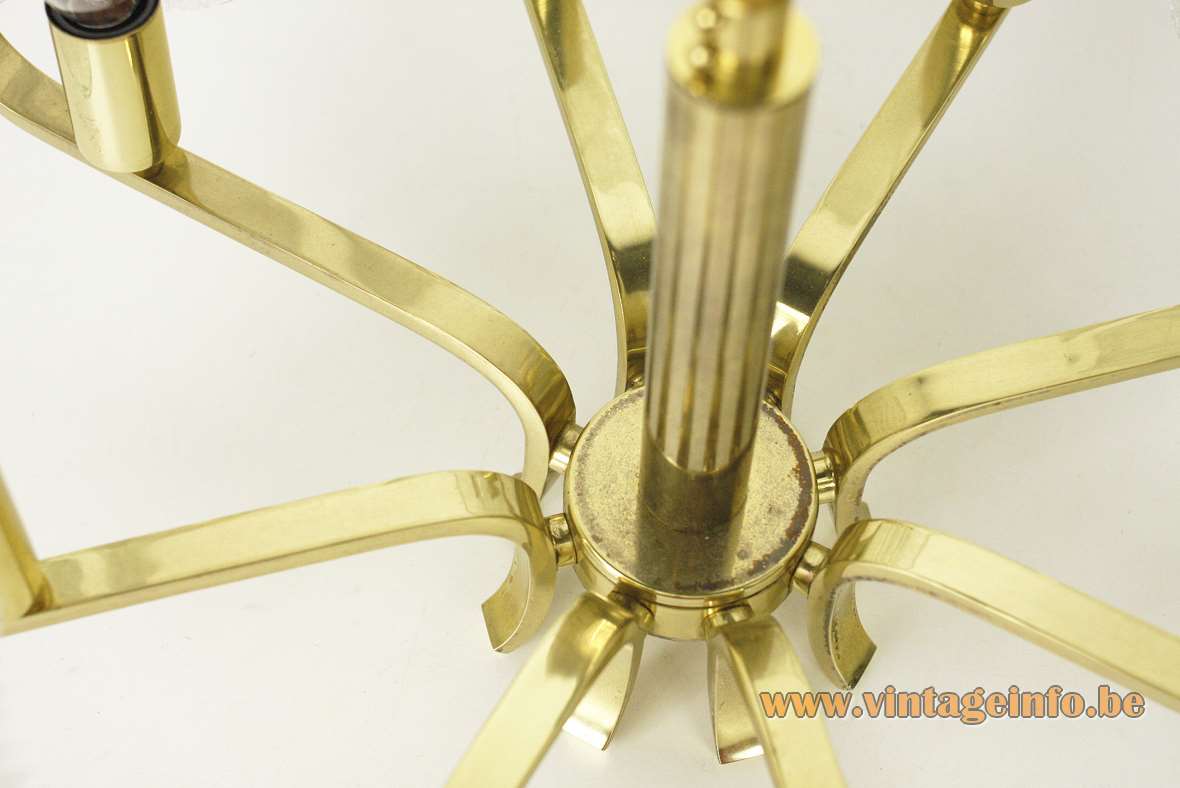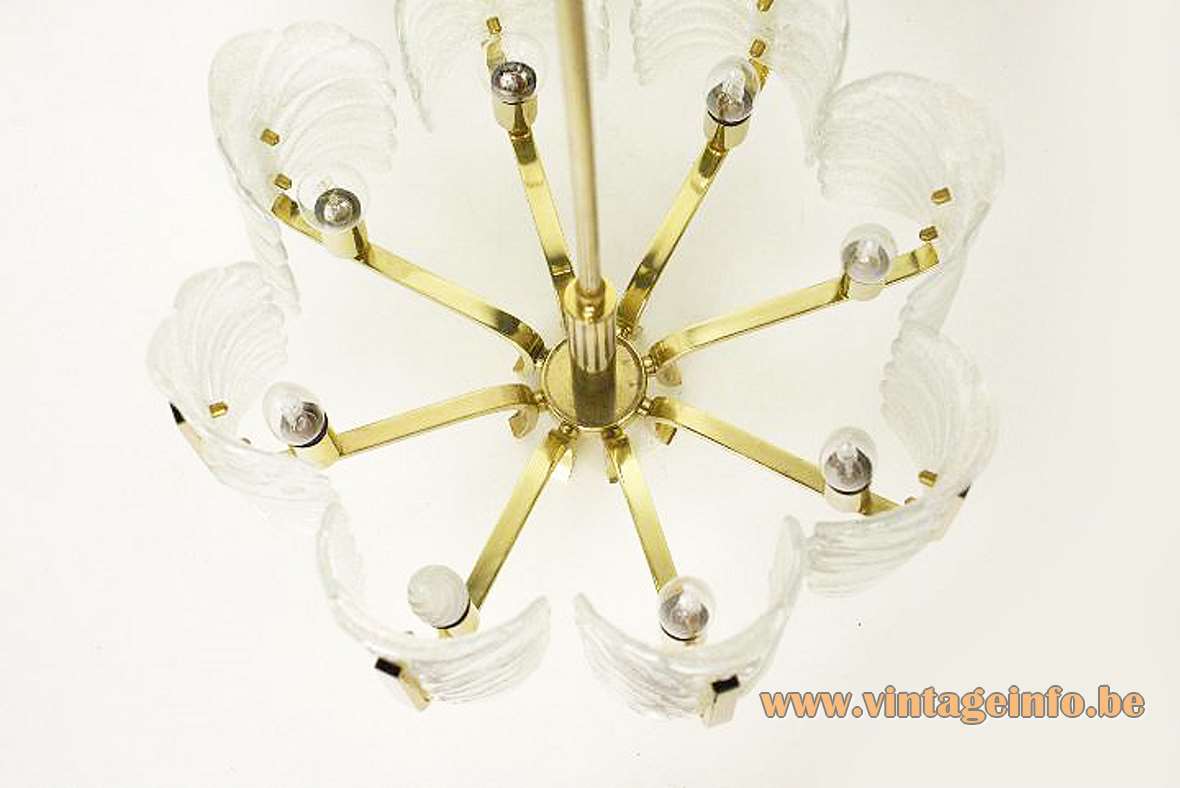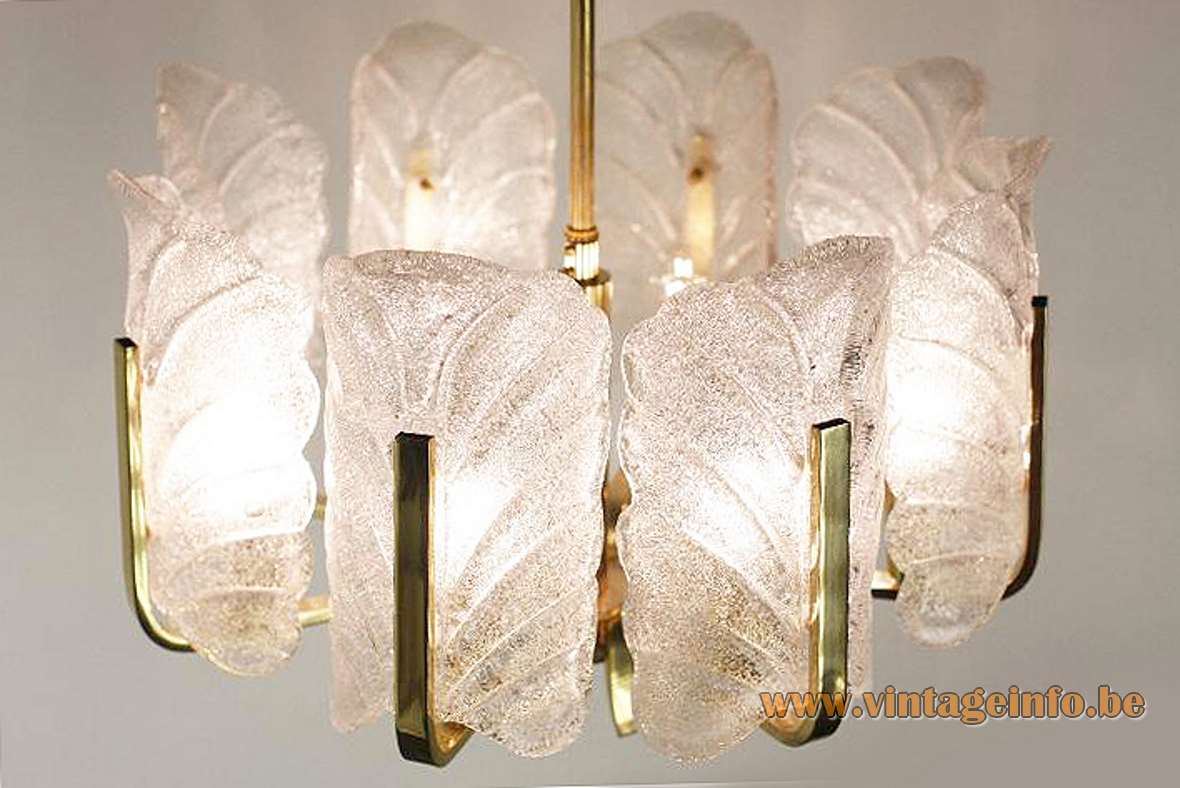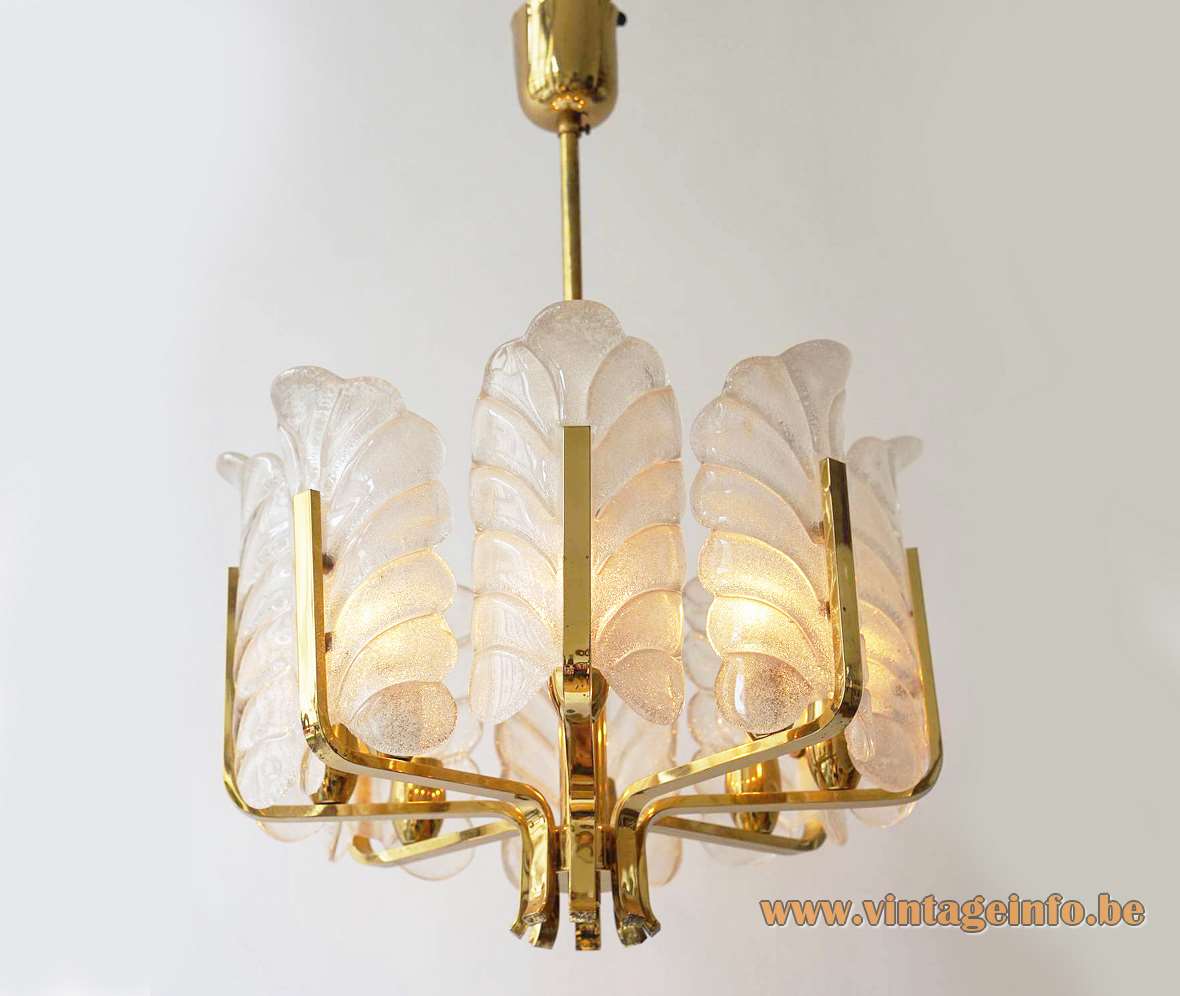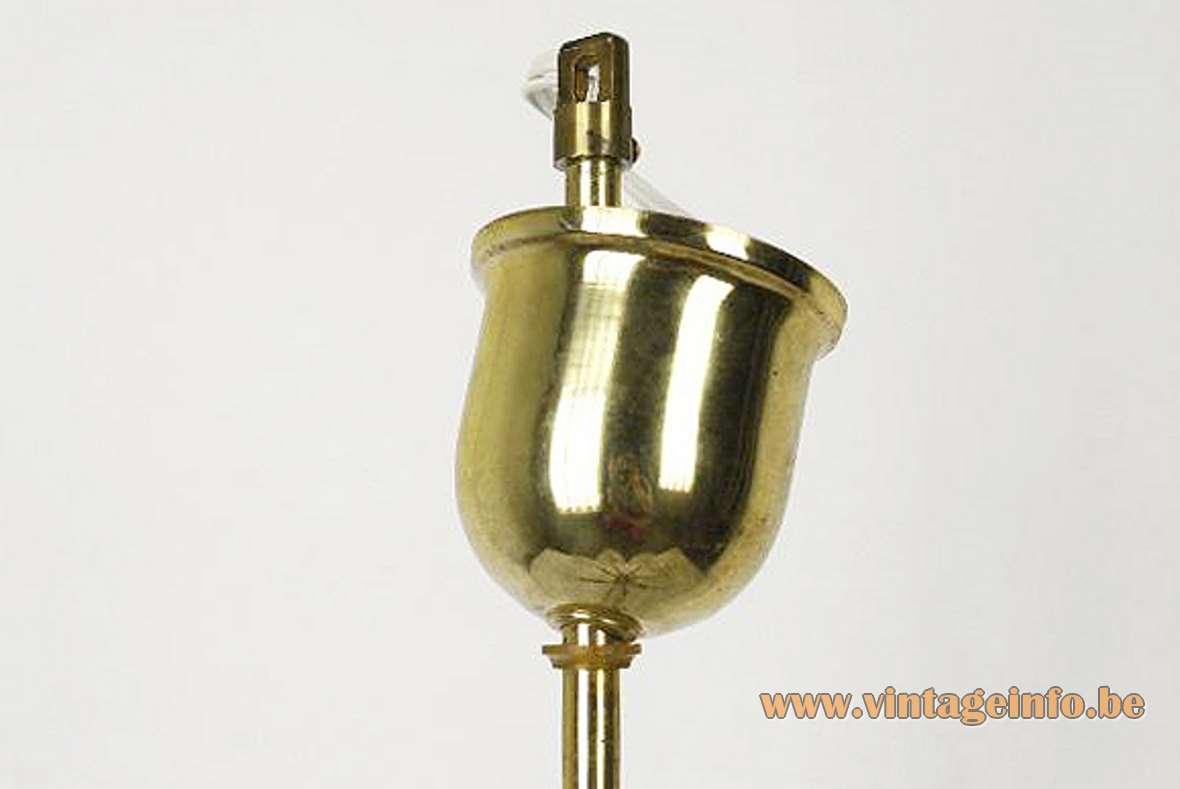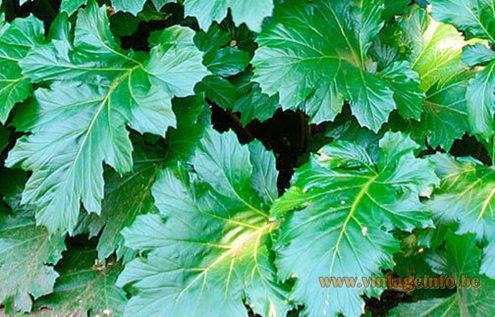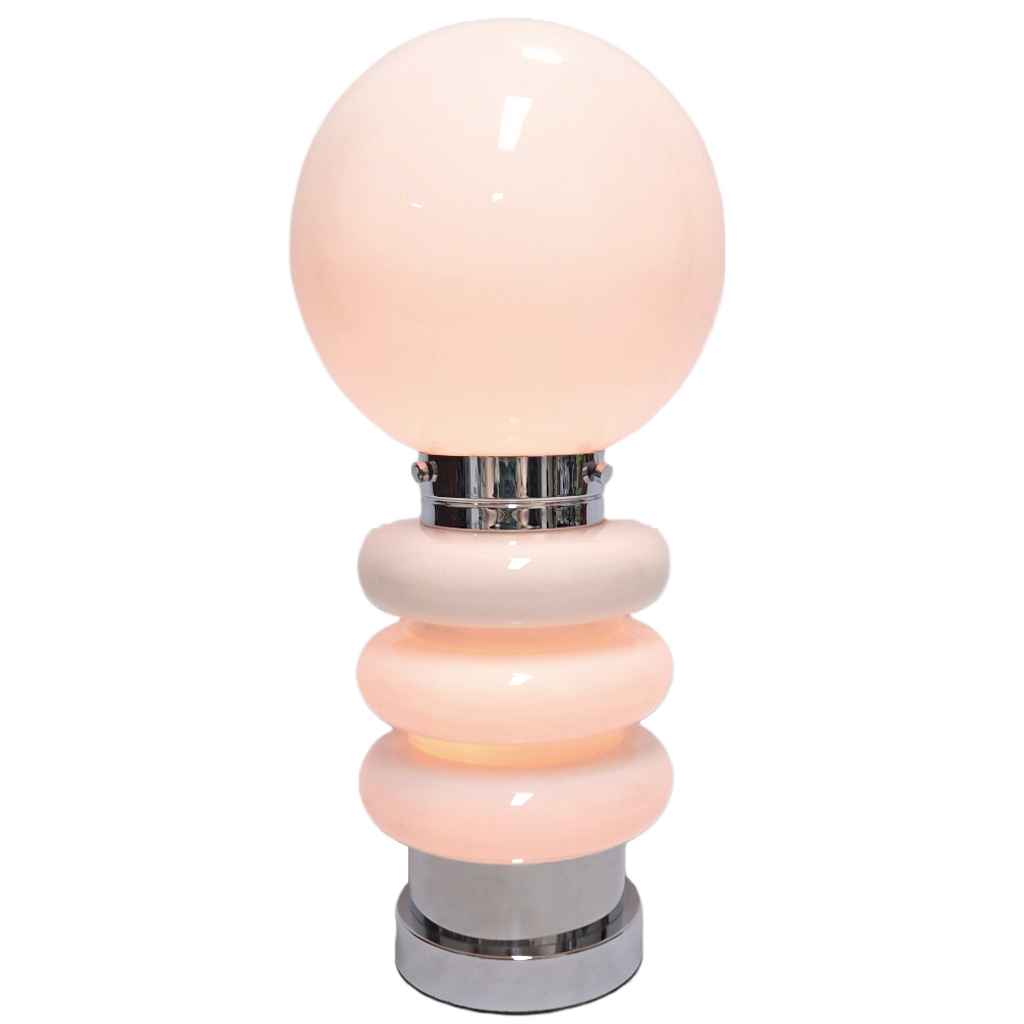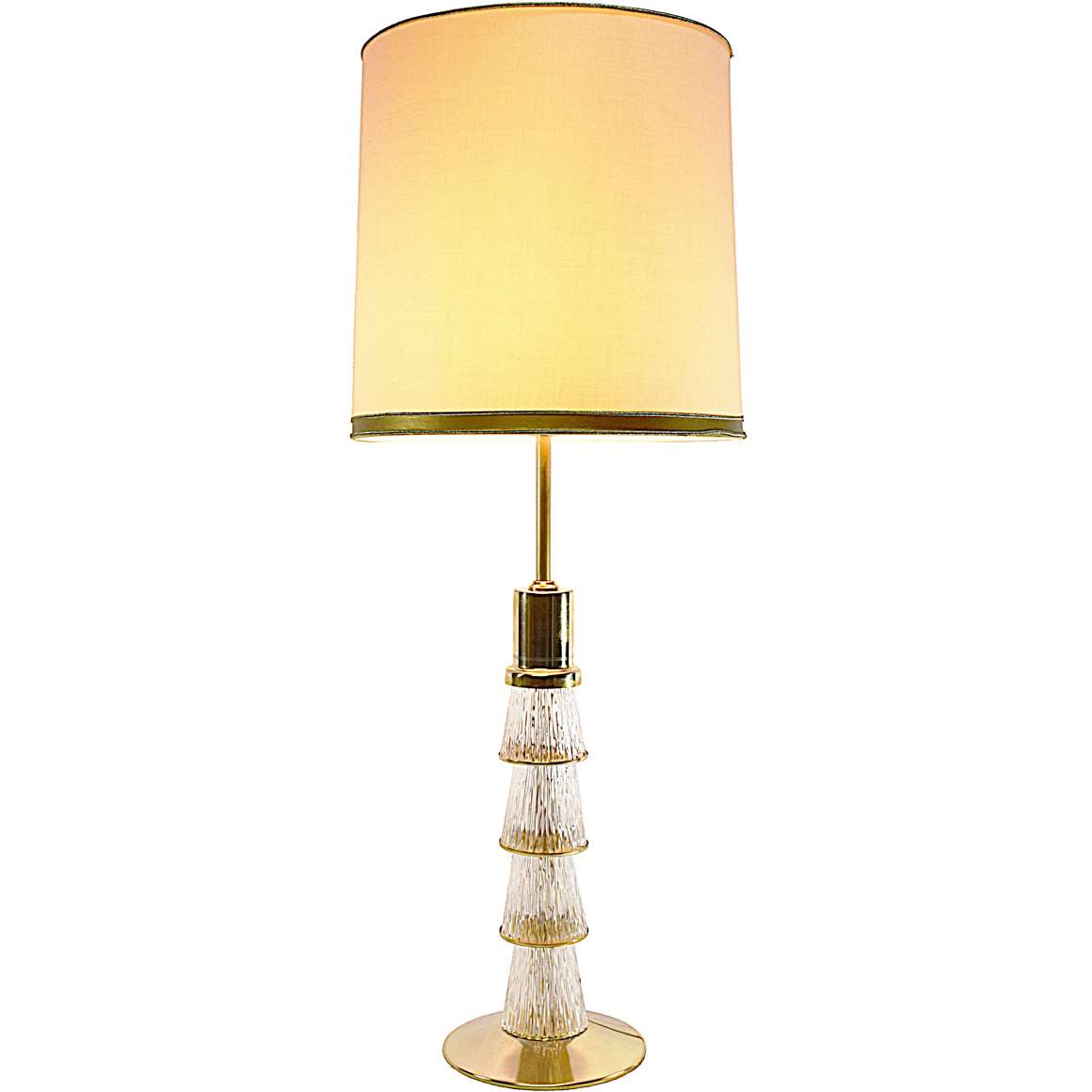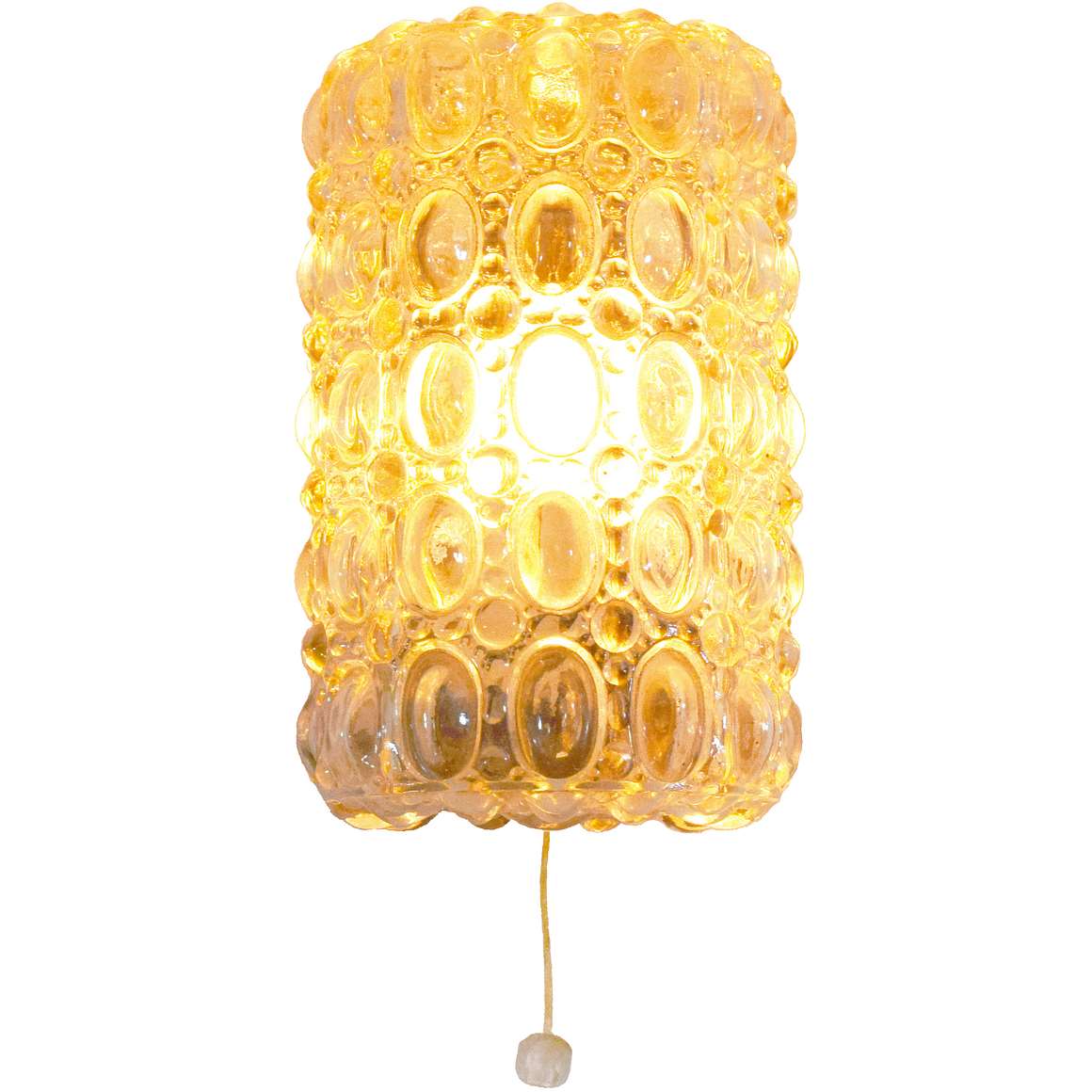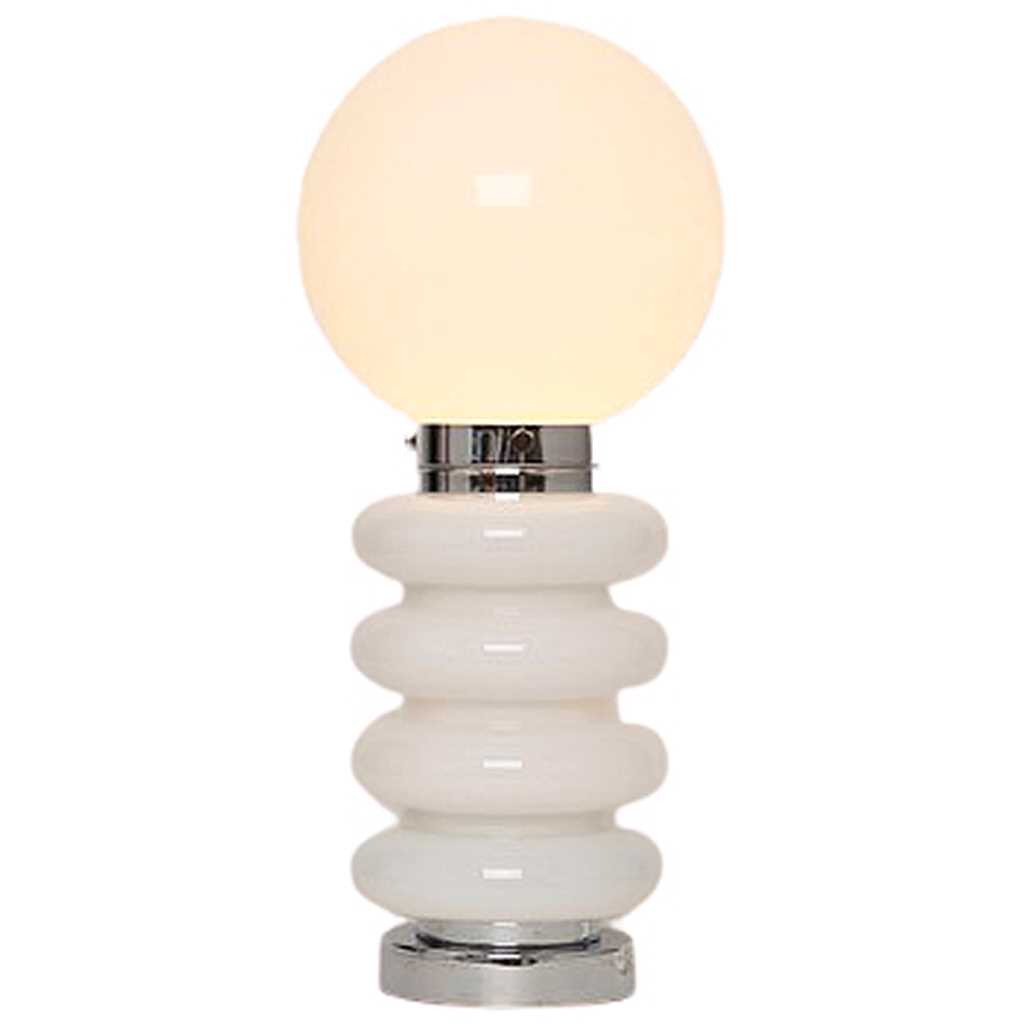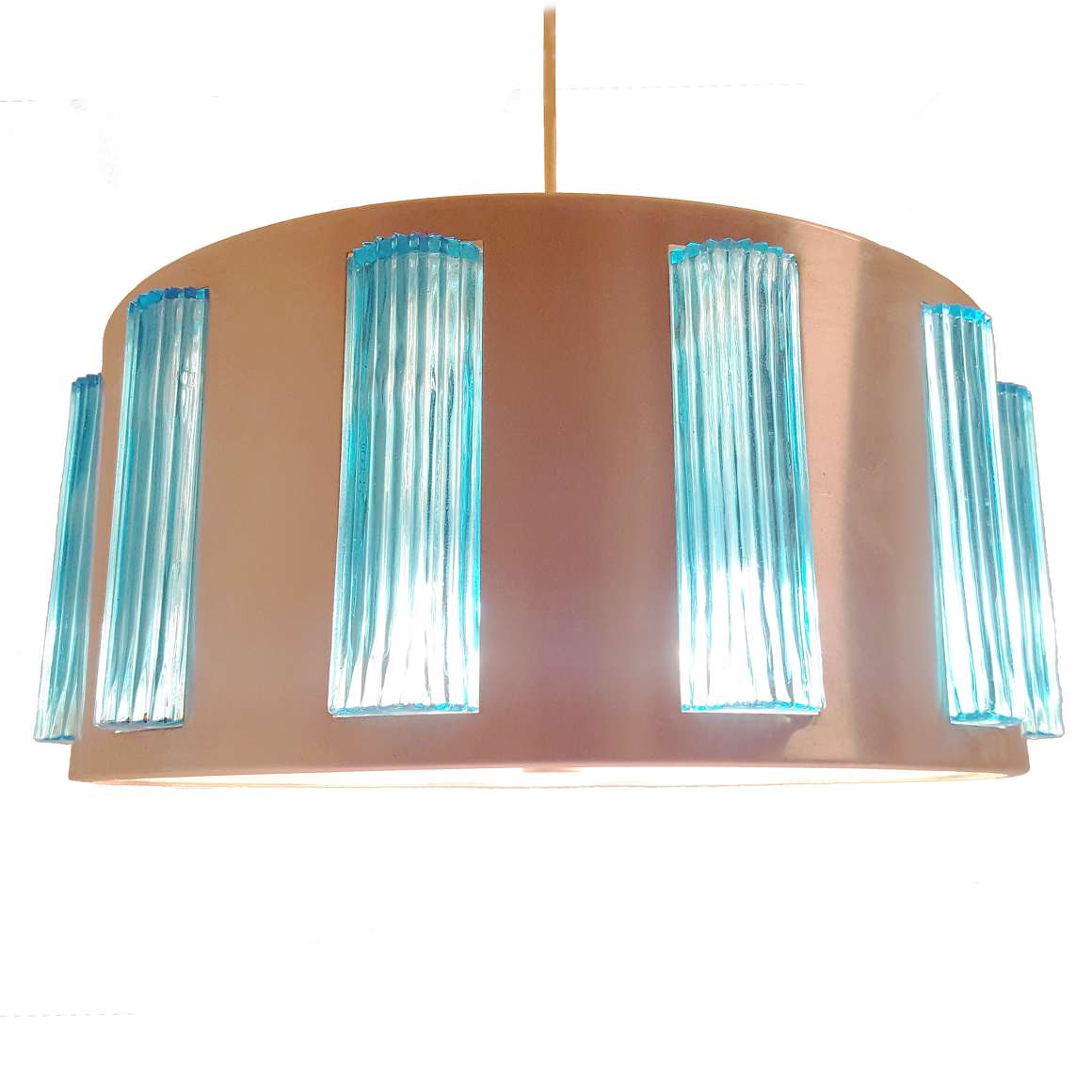Links (external links open in a new window)
Google images – Acanthus mollis
The town of Orrefors – Wikipedia
Glasrikets Historia Orrefors (in Swedish)
Kosta and Orrefors – Google Maps
The Kennedy Center in Washington,USA
Vintageinfo
Many thanks to Lluís from Eclectique Vintage for the photos. And many thanks to Frank from Flowermountain.be for the additional pictures.
Josef Brumberg Acanthus Chandelier
Materials: 8 hand blown thick crystal bubble glass leaves (pulegoso) round lampshade. 8 folded flat polished brass rods. Brass rod, canopy and parts. Brass E14 sockets with a ribbed porcelain ring.
Total Height: 80 cm / 31.49”
Height: 27 cm / 10.62”
Width: ∅ 48 cm / 18.89”
Glass: 24 x 13 cm /9.44 x 5.11”
Electricity: 8bulbs E14, 8 x 40 watt maximum, 110/220 volt.
Anytypeof light bulb canbeused, not a specific one preferred.
Period: 1960s, 1970s.
Designers: To be appraised.
Manufacturer: Josef Brumberg, Sunderen, Germany.
Other versions: This Josef Brumberg Acanthus chandelier exists in many varieties and sizes. It was also made as a floor lamp. Table lamps and wall lamps were also produced.
Always said that this is a chandelier by Carl Fagerlund and Orrefors, but I never seen one with an Orrefors label. These lamps with this glass and brass were sold by the German company Josef Brumberg, Sundern. You often find lamps with the JBS label, but attributed to Orrefors… You can find the label over here.
So in all probability the Orrefors story is just another fabrication.
Acanthus: a plant with bold flower spikes and spiny decorative leaves, native to Mediterranean regions. Acanthus mollis, commonly known as bear’s breeches.
Josef Brumberg
The Josef Brumberg company was founded in 1873 by merchant Hermann Josef Brumberg as a processing metal factory. It was one of the first industries in Sundern.
In 1875 the company turned into a petroleum lamps producer. In 1890 a flood disaster in the valley of the Rohre river ruined almost the whole production.
After the death of Hermann Josef Brumberg in 1892, his son Josef took over. In 1914 a big fire destroyed the complete factory buildings. The sons Josef and Walter Brumberg overtook the company in 1933.
During the Second World War the production was compelled to be changed for German Armed Forces needs.
In 1950 another fire destroyed the company and its most important documents and files as well as design drawings.
In 1972 the brothers Hermann Josef and Johannes Brumberg became the fourth generation entrepreneurs.
The Josef Brumberg company was liquidated in 1985. The new founded Brumberg-Leuchten GmbH & Co. KG continued with the family’s tradition.
In 2007 Johannes Brumberg jr. became CEO.
Carl Fagerlund
Carl Fagerlund, born 25 November 1915 in Kalmar, Sweden was a lighting and glass designer. He was educated in Stockholm, where he qualified as a design teacher.
He worked as lead lighting designer for the Orrefors glass company from 1946 until 1980. Fagerlund gained great success with large lighting installations for the head office of General Motors in Detroit. He also designed lights for the Kennedy Center in Washington, both in the United States.
Fagerlund is well known for his Modernist designs where he combined Neoclassical forms with naturalistic themes. He died in Orrefors were he lived for a long period in his life in 2011 at the age of 96.
Orrefors Glasbruk
Orrefors started business on the site of an older iron works in Orrefors, Småland, Sweden. The company produces art glass and utility glass made of crystal since 1898. It was a part of the Swedish glass-works group Orrefors Kosta Boda AB (Kosta and Orrefors are some 20 km (12,5 miles) away from each other). Lighting production ended in the eighties but resumed in 2006 when Orrefors began a collaboration with the lighting company Zero.
Designers that worked for the famous company are: Knut Bergqvist, Heinrich Wollman, Gustav Abels, Simon Gate, Edward Hald, Nils Landberg, John Selbing, Sven Palmqvist, Edvin Öhrström, Ingeborg Lund, Gunnar Cyrén, Rolf Nilsson, Olle Alberius, Henning Koppel, Berit Johansson, Styrbjörn Engström, recently Karl Lagerfeld. And of course many others.
Pulegoso
Italian word taken from the dialect word pulega, which means bubble. The glass is containing numerous bubbles of all sizes, produced by adding bicarbonate/soda, gasoline, or other substances to the glass. The bubbles make the glass semi-opaque and give the surface an irregular texture. The technique was developed in the 1920s by Napoleone Martinuzzi (1892-1977) on the island of Murano, Italy and used for the first time by the famous Venini company.
